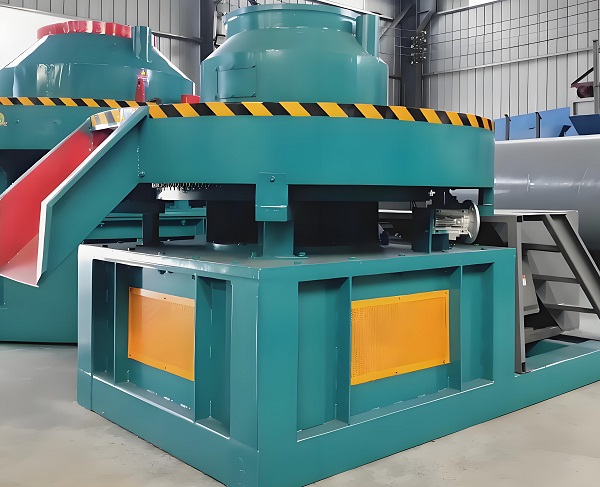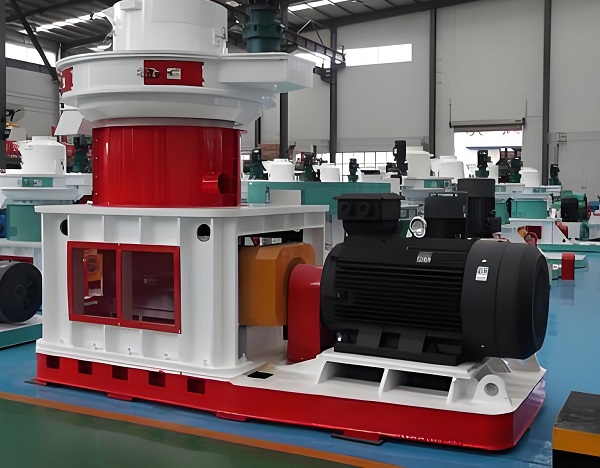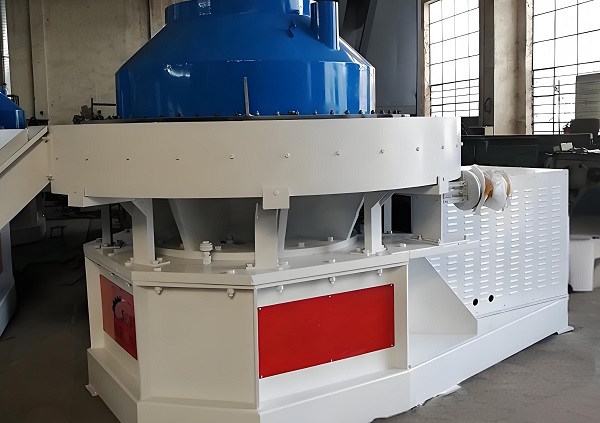The RDF (Refuse Derived Fuel) pelletizer is a core device that processes pre-processed municipal solid waste and industrial solid waste into solid fuel pellets with a specific shape, density, and calorific value. Its operating principle and process revolve around three core steps: raw material modification - extrusion molding - quality control, achieving waste reduction, harmless treatment, and resource utilization.
Operating Principle: Synergistic Effects of Physical Extrusion and Thermal Effects

The core operating principle of the RDF pelletizer is based on the synergistic effect of mechanical extrusion molding and the thermal effects of the material. External forces overcome the cohesive forces between material particles, compressing the loose material into dense pellets. This can be divided into three key processes:
Material Plastic Deformation: After crushing, sorting, and drying (moisture content controlled at 10%-25%), the material enters the pelletizer's feed hopper and is fed at a constant speed by a screw feeder into the extrusion zone between the ring die and the compression rollers. The inner wall of the ring die is equipped with evenly distributed forming holes (typically 8-12mm in diameter). The motor-driven rollers rotate at high speed, exerting a continuous extrusion pressure (up to 50-150 MPa) on the material. This pressure expels air between the material particles, and components like cellulose and lignin undergo plastic deformation due to extrusion, forming a compact mass.
Thermal Effect Assisted Forming: During the extrusion process, friction between the material and the ring die and rollers, as well as internal friction between the material particles, generates significant heat, raising the material temperature to 70-120°C. This elevated temperature not only softens organic components (such as plastics and rubber) in the material, enhancing its plasticity, but also promotes the proper evaporation of moisture, reducing the moisture content of the pellets after forming. Furthermore, the thermal effect can cause subtle physical and chemical changes in some components of the material, such as gelatinization of starch and softening of fibers, further enhancing the cohesive strength of the pellets and preventing loosening and breakage after forming.

Pellet Forming and Cutting: Under pressure, the extruded material is forced through the forming holes of the ring die, forming continuous cylindrical strands. As the material strands emerge from the ring die, cutters on the outside of the die cut them according to the set pellet length (usually 10-30mm). The cut pellets are then discharged through the discharge port, completing the pelletizing process.
Workflow: Standardized Pretreatment and Forming Processes
The RDF pelletizer's workflow must be coordinated with the front-end pretreatment system and the back-end cooling and screening system to form a complete RDF production chain. The specific process can be divided into five major steps:
Raw Material Pretreatment (Front-End Preparation): This is the prerequisite for ensuring pelletizing quality. The raw solid waste undergoes three steps: First, a crusher is used to reduce bulk material to uniform particles ≤50mm in size; second, sorting equipment (such as a magnetic separator or air separator) is used to remove non-combustible impurities such as metal, glass, and stone; and finally, a dryer is used to reduce the moisture content of the material to 10%-25%. (Excessively high moisture content can cause pellets to stick together, while excessively low moisture content reduces plasticity and affects the molding effect.) Feeding and Conveying: Pre-treated materials are fed into the RDF pelletizer's feed hopper via a belt conveyor or screw conveyor. A stirring device within the feed hopper prevents material bridging (clumping of material into the feed port) and ensures uniform and stable material flow into the feed mechanism. The screw feeder in the feed mechanism adjusts the feed speed based on the pelletizer's load, preventing equipment overload from excessively fast feeds or idling from excessively slow feeds.

Extrusion (core process): After the material enters the extrusion chamber, it is extruded by the combined action of rollers and a ring die. This process requires real-time monitoring of two key parameters: extrusion pressure (adjusted by a hydraulic system based on material hardness) and material temperature (monitored by a temperature sensor. If the temperature is too high, the cooling system is activated to prevent carbonization; if the temperature is too low, the roller speed is adjusted to increase frictional heat generation). After the material passes through the ring die's forming hole, the cutter cuts it to the preset length. The resulting pellets typically have a temperature of 80-110°C and a moisture content 3%-5% lower than the initial feed. Cooling and Screening (Back-end Processing): Newly formed pellets are hot and have low hardness. They must be immediately fed into a cooler (such as a countercurrent cooler). Cool air quickly cools the pellets to room temperature (25-30°C) and further reduces their moisture content to 8%-15%, improving pellet hardness and stability. The cooled pellets then pass through a vibrating screen to remove unqualified particles of size and length (unqualified particles can be returned to the crusher for reprocessing), ensuring the uniformity of the finished pellets.
Finished Product Storage and Transportation: Qualified RDF pellets are screened and transported to the finished product warehouse via a belt conveyor. During storage, proper ventilation and moisture control are required to prevent moisture absorption and clumping. The finished product can be bagged using a baler or directly transported via conveyor equipment to end-use locations such as boilers and incinerators, where it can be used as a clean energy alternative to fossil fuels. The RDF pelletizer uses the working principle of "physical extrusion + thermal effect" combined with standardized pretreatment and molding processes to achieve the transformation of solid waste into high-value-added fuel. Its core lies in balancing the plasticity and molding stability of the material through precise parameter control, providing key technical support for the industrial application of RDF.
Save Time! Get A Detailed Quotation Quickly.
